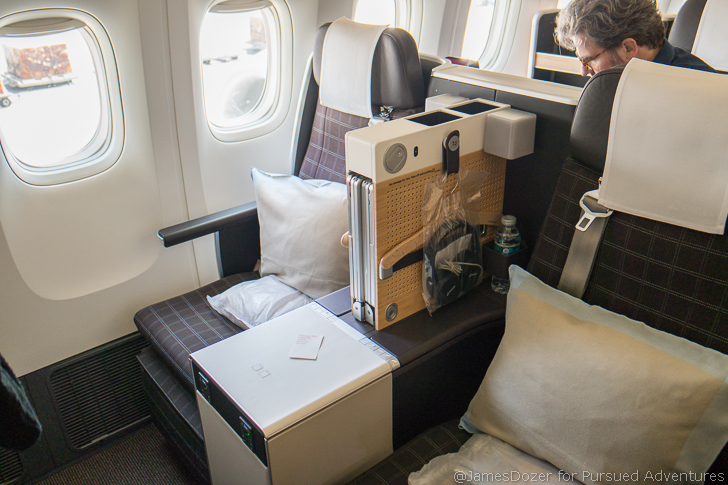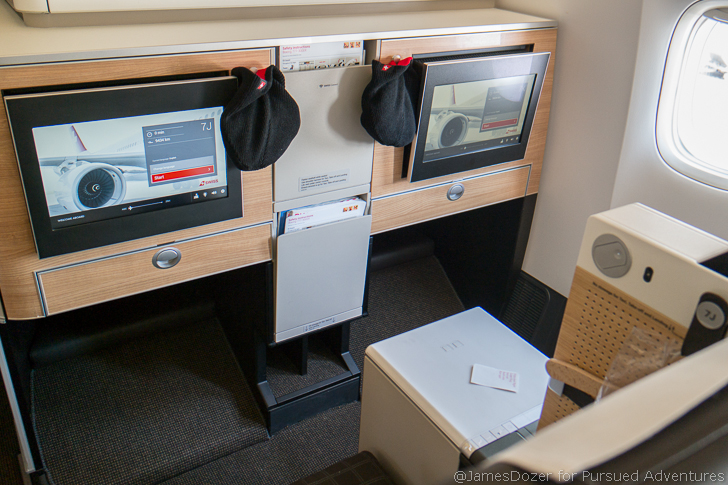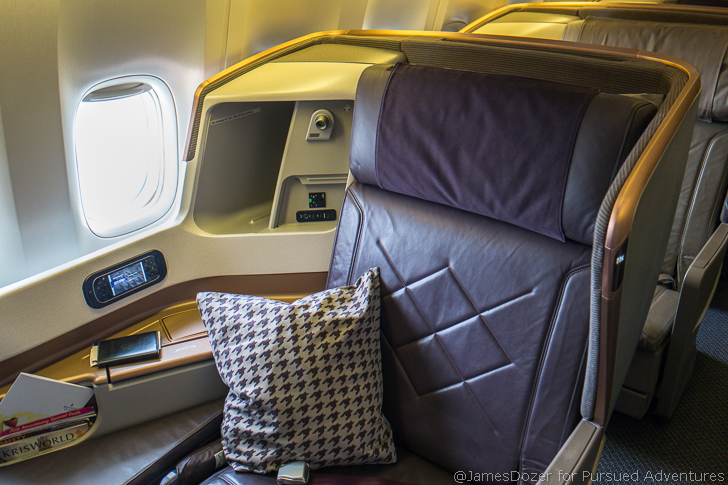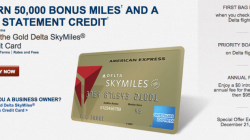As a points and miles guy, my friends are always asking me for advice on which credit cards they should be applying for. From the Chase Freedom and Freedom Unlimited cards to the American Express Platinum charge card, people are constantly asking which new credit card is the hottest on the market. But my answer to them is always, “it depends.” Different cards have different purposes and it all depends on what you’re looking for in a credit card and how you intend to use it.
I should say that this is an introductory post so if you have any knowledge of the different miles and points earning credit cards, you can stop reading now. This post is not intended for you. But if you don’t know much about miles and points and want to learn more about how miles and points can help you travel for free, then this post is for you.

Basics of Earning Miles and Points with Credit Cards
First and foremost, the most important thing to note is POINTS AND MILES ARE NOT CREATED EQUAL.
I hear it all the time, “This credit card gives me double points on everything I buy and I can use it on any airline, at any time with no blackout dates” or “Why should I apply for this other credit card when it only earns me 1 mile that I can only use on this airline?” Well, that’s because different miles and points have different values and some miles and points are worth more than others. I’ll explain more about this later on in the post.
But before we talk about which miles and points are worth more than others, we have to look at the different types of miles and points earning credit cards out there. For sake of simplicity, I will break them down into 3 basic categories.
- Credit cards that earn you “cash back” or points that can be used for statement credits.
- Airline and hotel branded credit cards that earn you airline miles or hotel points.
- Credit cards that earn you points that can be used as statement credits or transferred to airline and hotel partners.
Cash Back and Statement Credits
The majority of credit cards out there fall under this category. These are your basic credit cards that earn you points (or miles) that can be used later as statement credits for travel-related purchases. For example, if you have 40,000 points, they can be used to give you a statement credit of $400 when used towards travel-related purchases. And because it’s just a statement credit, that’s how they can be used on “any airline, at any time without any blackout dates.” These are the same as cash back cards that just give you a certain percentage of cash back every month.
Examples of these credit cards include the Chase Freedom Unlimited and Bank of America Travel Rewards cards where you can earn 1.5% back on every dollar you spend and the Barclaycard Arrival Plus credit cards where you earn 2 miles for every dollar you spend.
If you only care about cash back or just want the simplicity of earning a statement credit when making travel-related purchases, then these credit cards are for you. They are simple to use, simple to understand and usually come with a very low, or no annual fee. With these types of cards, the points are usually valued at one cent per point, meaning for every 10,000 points earned, you will receive $100 in statement credits.
Airline Miles and Hotel Points
These credit cards earn you miles and points that go directly into your respective frequent flier or hotel loyalty rewards program. The main perk to these credit cards is that they all come with travel benefits such as free checked bags, priority boarding, preferred seat assignments or even lounge access. Different cards will have different benefits so you need to look at which airlines you fly often to make sure they will be worth your while.
Examples of these credit cards include the Chase MileagePlus Explorer and Southwest Rapid Rewards credit cards; American Express Delta SkyMiles and Hilton Honors credit cards; and the Citi AAvantage credit card. These cards let you earn miles/points towards those respective programs but also grant you certain perks when flying or staying at those specific airlines/hotels.
If you fly a certain airline or stay at a certain hotel chain frequently, it would be worth looking at one of these cards. For example, the Hilton Honors American Express Ascend card gives you automatic Honors Gold status. Benefits of Hilton Honors Gold status include complimentary room upgrades, bonus points and free breakfast. The card does come with an annual fee of $95/year but would be worth it if you gained more than $95 in benefits a year. For me, I stay at Hilton Hotels a lot, so the free breakfast (for me and my friends) and room upgrades make it worth it for me to have this card, even if I don’t actually put any spending on it.

Another example would be the Chase MileagePlus Explorer card which gives you priority boarding and a first checked bag free when flying United Airlines. The annual fee is $95/year so if you check more than 3 bags a year, this card will be worth it to have.
It should be noted that you cannot transfer miles earned from one airline frequent flier program to another but you can transfer certain hotel points to some airline partners. For example, you cannot transfer miles earned from your United MileagePlus Explorer card to your Delta SkyMiles account but you can transfer your Marriott Rewards points earned from your Chase Marriott Rewards Premier Plus credit card to other airline frequent flier programs such as American, Delta and United.
Travel Rewards and Transferable Points
The third category of miles and points earning credit cards are the most valuable. With these cards, you can use points to make travel-related purchases directly or transfer them to hotel and airline partners. In my opinion, these are the best cards to have because they are the most flexible. They allow you to either book airline tickets directly with your points or transfer them to an airline or hotel partner to be redeemed through their frequent flier or loyalty rewards program.
Examples of these cards include the Chase Sapphire Preferred, Chase Sapphire Reserve, American Express Platinum, American Express Every Day Preferred, Citi Prestige, and Citi Thank You Premier cards. Capital One recently joined this category with their Capital One Venture cards but it’s slightly different.
These transferable points credit cards are not only great because of their flexibility but because the “higher-end” credit cards (Chase Sapphire Reserve, American Express Platinum, Citi Prestige) all come with a host of travel perks such as complimentary airport lounge access, annual travel statement credits and increased travel and purchase protections. If you travel more than a few times a year, a higher-end credit card might be worth it for you.

I will add the Chase Freedom and Freedom Unlimited credit cards into this category also with one caveat. As stand-alone cards, these two are your standard cash back cards (see the first category above). However, when they are paired with a credit card that earns Ultimate Rewards points (Chase Sapphire Preferred, Chase Sapphire Reserve, or Chase Ink Plus), your cash back points can be combined with your Ultimate Rewards points. I’ll talk more about what Ultimate Rewards points are below.
Before applying for any new credit card, you should consider the following things:
- How much is the credit card annual fee?
- What benefits does the credit card come with?
- Will the benefits outweigh the annual fee of the credit card?
For example, I have the Chase Sapphire Reserve card and I absolutely love it. The CSR card does come with a hefty annual fee of $450 but it also comes with plenty of travel perks to offset the annual fee such as a $300 annual travel credit, complimentary Priority Pass lounge access for me and my guests and a host of other travel and purchase protections. With the $300 annual travel credit, the annual fee effectively becomes $150/year and I can guarantee you, I have used more than $150 in lounge entrance fees alone this year, and that’s not even including all the points I have accumulated and other perks I have used.
It’s a no-brainer for me to have a credit card like this but it might not apply to you. If you don’t travel that much, having a credit card with a hefty annual fee will not be worth it for you. If you only travel a few times a year, a basic cash back card would probably be more appropriate.
What Can You Do with All These Points?
The three big banks (Chase, American Express and Citibank) all have their own flexible point currencies. Chase points are called “Ultimate Rewards” points, American Express points are called “Membership Rewards” points and Citibank points are called “Thank You” points. They all have different names but they all function essentially the same way. And before you even ask, no, you cannot transfer points from one program to another. Meaning, you can’t transfer your Thank You points to your Membership Rewards account or vice versa.
To redeem these points, you have two options. You can either use them to book a trip directly through the bank’s travel website or transfer them to hotel and airline partners. For example, I can use my Ultimate Rewards points to book a trip directly through Chase’s Ultimate Rewards travel website for a point value of 1.5 cents per point or I can transfer them directly to one of Chase’s travel partners such as British Airways, Hilton or United.
For me, transferring points to an airline partner and then using them to book international first and business class flights around the world is the best use of my points but I understand not everyone wants to, or can travel internationally every year. Some people just want to book a trip to Maui every year and flying coach is perfectly fine for them. And for these people, they will be perfectly happy with using points to book a cheap ticket somewhere. For them, 60,000 Ultimate Rewards points would be worth $900 in flights.
Benefits of Transferring Points
But what I would rather do is transfer my Ultimate Rewards points to an airline partner and then book a flight using my frequent flier miles. For example, I can transfer 25,000 Ultimate Rewards points to United MileagePlus and then use those miles to fly roundtrip, anywhere within the continental United States, regardless of the price. If I were to use my Ultimate Rewards points to book a flight directly, 25,000 Ultimate Rewards points would only net me a flight worth $375. But by transferring my Ultimate Rewards points to United, the cost of the ticket is irrelevant as long as there is award space.
Want to go to Hawaii? You can transfer 60,000 Ultimate Rewards points to Singapore Airlines KrisFlyer and fly United Airlines FIRST CLASS to Hawaii! Do you think you can find a round trip, first-class ticket from the mainland to Hawaii for under $900? I don’t think so.
But you know what else 60,000 points can get you? A business class ticket to anywhere in the Middle East with a lie-flat bed like this.


That being said, the major downside to using frequent flier miles to redeem for flights is the lack of award availability. You do have to be more flexible with your travel plans as not all flights will have award space for redemption.
Now, here’s the other thing you should know about transferring points to airlines – different banks will have different airline and hotel partners. For example, Chase Ultimate Rewards partners with United and American Express Membership Rewards partners with Delta. So if you really like flying United or Delta, it would be in your best interest to go with a credit card that earns you points that can be transferred to your favorite airline. However, there is some overlap in the programs. For example, all three banks (Chase, American Express and Citi) partner with Singapore Airlines and Virgin Atlantic but only Chase and American Express partner with British Airways.
But here’s the best part that you might not know. Just because a specific airline is listed as a transfer partner, it does not mean you actually have to fly that airline. It just means you have to use that airline’s frequent flier program. For example, Chase Ultimate Rewards partners with British Airways, Air France/KLM, Korean Air, Singapore Airlines, Southwest Airlines, United Airlines and Virgin Atlantic. On the surface, it doesn’t seem like very many airline partners but in actuality, by having these airlines as transfer partners, you can essentially fly the majority of airlines out there. Let me explain.
By transferring your Ultimate Reward points to United Airlines, you can fly any of United’s 40+ airline partners such as Lufthansa, SWISS, Thai Airways, Turkish Airlines and others to anywhere in the world, even if United doesn’t fly there. Same goes for Singapore Airlines, using Singapore Airlines KrisFlyer miles, you can fly any of their 40+ airline partners including Austrian, Air Canada, United Airlines and Virgin Atlantic to anywhere in the world. And with Delta, you can fly any of Delta’s partners including Virgin Atlantic, Virgin Australia, Korean Air and others.

So you see how a limited number of transfer partners actually equals a much larger list of actual airlines to fly? And with most airline programs, transferring your points from Chase, American Express and Citi will transfer at a 1:1 ratio, meaning 1 Ultimate Rewards point will equal one United Airlines mile. This is not true for all airlines so you need to look at the specific transfer rate for the airline you want to transfer points to. For example, Membership Rewards points will only transfer to JetBlue at a 250:200 ratio.
So which credit card should you apply for?
Like I said earlier, that will all depend on what you’re looking for in a credit card. Are you looking for something that’s simple to use? That comes with a low or no annual fee? And gives you the flexibility to redeem for travel purchases without any complexity regarding blackout dates and limitations? Then a simple cash back card like the Barclaycard Arrival Plus World Elite MasterCard would be good for you.
If you’re loyal to an airline or hotel chain…
Those who want to rack up as many miles as they can in a specific program and gain travel benefits such as free checked bags and priority boarding should choose an airline co-branded credit card such as the Chase United MileagePlus Explorer credit card or the Citi American Airlines credit card.
If you want to earn a lot of points quickly…
But if you want the ability to earn a lot of points quickly through category bonus spend and want the flexibility to either book your travel purchases with points or transfer points to an airline or hotel, then a travel rewards credit card such as the Chase Sapphire Preferred, American Express Everyday Preferred or Citi Thank You Premier would be good for you.
You might not always be able to get points in your preferred frequent flier program, but it may be possible to make a redemption through a partner, such as using Singapore’s KrisFlyer miles to travel on United Airlines. Make yourself familiar with all the transfer options before choosing this path.
If you want a long list of travel benefits…
And lastly, if you are looking for a travel rewards credit card with an extensive list of travel benefits (annual travel credit, Priority Pass Lounge membership, etc.) and are willing to pay a higher annual fee of $450 or more, then a premium credit card such as the Chase Sapphire Reserve, American Express Platinum charge card and City Prestige credit card might be good for you.
These cards are all great but you will have to sit down and do the math to make sure they will be financially beneficial for you. You’re essentially making a large down payment with the assumption you’ll earn it back — and more — in rewards throughout the year.
Conclusion
So those are my recommendations. It really all depends on what you want in a credit card and don’t worry about what other people are doing. We all have different travel and spending habits so what works for one person will not necessarily work for another person. Miles and points are our own personal rewards and they should be used for what makes us happy. I only care about using points for international first and business class flights but if earning enough points for a trip to Hawaii every year is important to you, then do it. As long as you’re happy, that’s all that matters.
Let me know if you have any questions or comments. Thanks for reading!
Here are some other related posts to help you earn the most miles and points.

